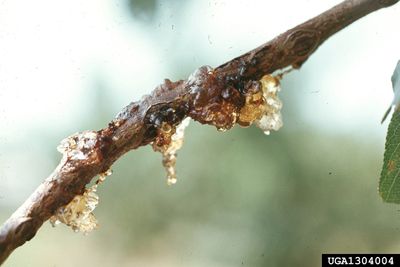Apricot Fungal Gummosis
Fungal issues are among the most common problems which home orchard growers may encounter. One fungus, Botryosphaeria dothidea, is responsible for a condition known as apricot fungal gummosis. Though the name may imply its presence solely in apricot trees, other trees (such as peach trees) may also be affected. Gummosis of apricots results from prior damage or injury to trees within the orchard. The cause of injury may vary greatly, or result from a combination of events. Some natural causes of damage include limbs broken by strong storms, hail damage, high winds, or even injury caused by insects or borers. While uncommon in the home orchard, large scale operations may inadvertently cause damage during the harvest process or by various farm machinery. The fungus enters the tree through these injuries.
Symptoms of Apricots with Gummosis
Among the first signs of apricot fungal gummosis is the presence of “blister-like” lesions on branches and portions on the trunk of the tree. Growers may notice, over time, that tissues within these areas will begin to die. In many cases, a gum-like residue begins to be produced. As the damage grows larger, cankers begin to form on the tree. Fungal spores continue to grow and reproduce. Then they are spread during periods of wet and humid weather.
Controlling Apricot Gummosis
While damage caused by apricot gummosis can be reduced by the use of fungicides, this practice is generally not recommended, as it is not cost effective. The most common suggested course of action is to ensure that fruit trees do not become stressed in the first place. Maintaining a proper fertilization and irrigation regime are two important steps in this process. While the disease will still progress in plants which have been well cared for, trees will be less susceptible to other possible pathogens or insects which may attack weakened plants. As with many fungal diseases, one of the best strategies is prevention. While it may not always be possible to completely prevent apricot fungal gummosis, there are some ways in which growers can deter its spread. The use of proper pruning techniques is essential. Growers should never prune trees when the plants are wet. Directly after pruning infected trees, all tools used should be sanitized before using them elsewhere in the orchard. Additionally, cut branches and plant debris should be removed immediately.
